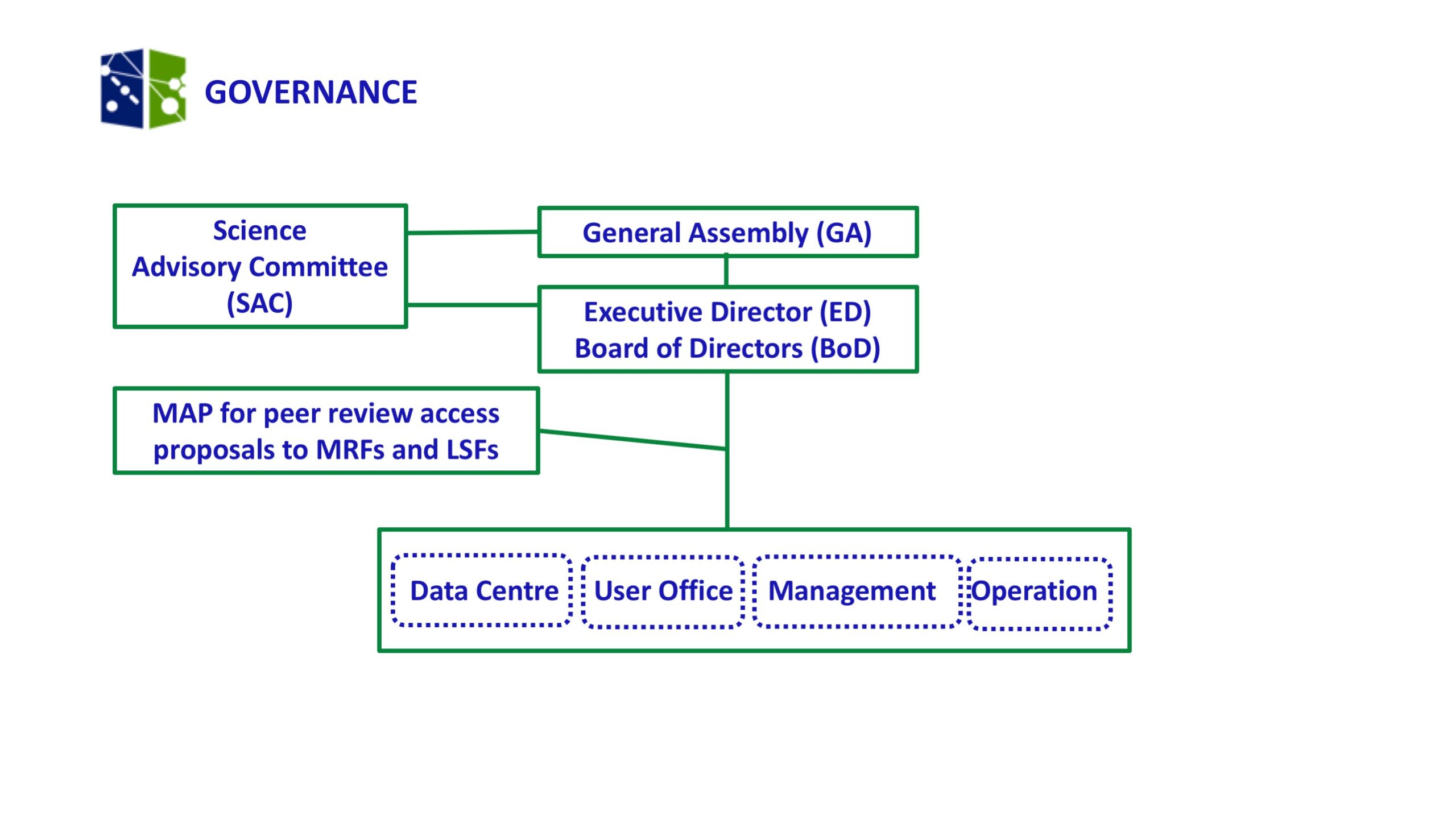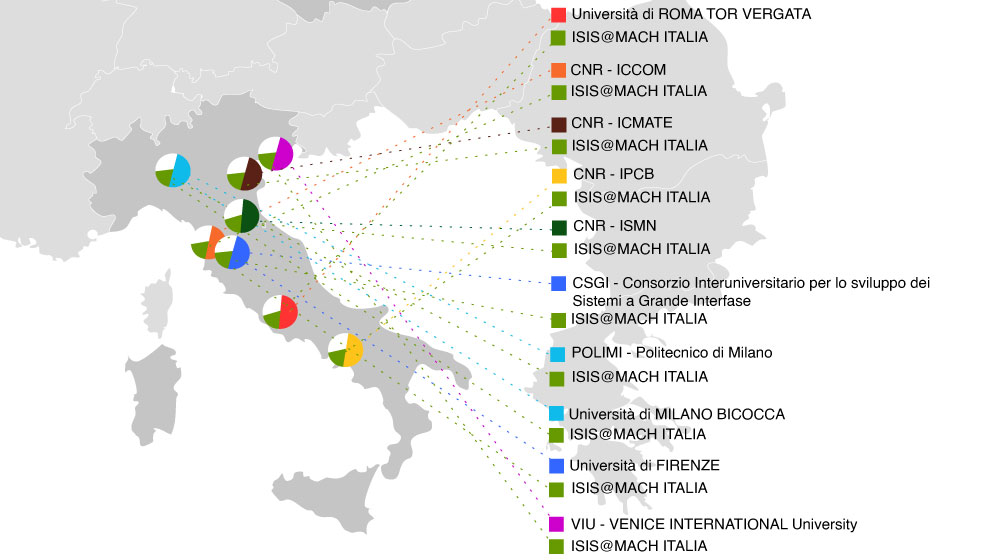Governing Bodies
IM@IT has designed the simplest possible governance (see Figure 2) and access models required to fulfil the spirit of the ESFRI requirements. The governing bodies are: The General Assembly (GA), The Executive Director (ED), The Board of Directors (BoD) and, one external body, The Scientific Advisory Committee (SAC).
The General Assembly is the highest governing body having full decision-making powers on its policies in scientific, technical, and administrative matters:
- appoints the Executive Director and the Unit’ Directors
- appoints the members of the Scientific Advisory Committee
- approves the IM@IT Technical Programmes
- approves the admission of new Partners
Member of General Assembly:
- Prof Silvia Licoccia (JRU coordinator), Università degli Studi di Roma Tor Vergata
- Prof Lidia Armelao, Consiglio Nazionale delle Ricerche
- Prof Piero Baglioni, Consorzio Interuniversitario per lo sviluppo dei Sistemi a Grande Interfase
- Prof Massimo Bonini, Università di Firenze
- Prof Giuseppe Gorini, Università degli Studi di Milano Bicocca
- Prof Carmelo Marabello, Venice International University
- Dr Sara Morisani, Associazione Italiana Ricerca Industriale
- Prof Andrea Pola, Politecnico Milan
In attendence:
- Professor Carla Andreani (Executive Director), Università di Roma Tor Vergata
- Professor Massimo Bonini (Deputy Director, Director Units CSGI and Università di Firenze), Università di Firenze
- Professor Alessandro Cianchi (Science Director), Università di Roma Tor Vergata
- Professor David Della Morte Canosci (Director for R&I in Medical Science), Università di Roma Tor Vergata
- Dr Claudia Martone (Program Manager), IM@IT
The Board of Directors (BoD) oversees the scientific and technical coordination and implementation of the strategies approved by GA and acts as internal advisory body to the Executive Director who chairs the BoD. BoD is composed by the Director proposed by each of IM@IT Unit Facilities and appointed by the GA.
Members of the Board of Directors
- Professor Ruggero Barni (Director Unit Milano Bicocca), Università degli Studi Milano Bicocca
- Dr. Francesco Casamichiela (Director Unit Politecnico Milan), Politecnico di Milano
- Dr Gennaro Gentile (Director Unit CNR – IPCB), Istituto per i Polimeri, Compositi e Biomateriali
- Dr Maria Losurdo (Director Unit CNR – ICMATE), Istituto di Chimica della Materia Condensata e di Tecnologie per l’Energia
- Dr Ilda Mannino (Director Unit VIU), Venice International University
- Dr Vittorio Morandi (Director Unit CNR – ISMN), Istituto per lo Studio dei Materiali Nanostrutturati
- Dr Claudio Sangregorio, (Director Unit CNR – ICCOM), Istituto di Chimica dei Composti Organometalici
- Professor Roberto Senesi (Director Unit Rome Tor Vergata), Università di Rome Tor Vergata
The Scientific Advisory Committee (SAC) provides independent advice to the GA and the ED on all strategic issues, as well as on the scientific, technical and operation activities. It is composed by a maximum of 11 independent experts in the fields relevant to IM@IT scientific core activities and it is appointed by the GA. SAC has no executive powers or liability. Its terms of reference are to advice to the GA on operations and developments with respect to:
- the status and future prospective in cutting edge areas of scientific research including opportunities and their potential scientific impact.
- the actions necessary for IM@IT to make a relevant contribution to these areas
- areas of current scientific activity which are declining in relevance:
- analysis of the achievement of IM@IT regarding its mission.
The SAC provides a broad based and long-term view considering experimental techniques, service, and training available at the Units IM@IT national sites and complementary techniques accessible through a pipeline to European Large Scale Facilities.

IM@IT Stakeholders
Search Location

